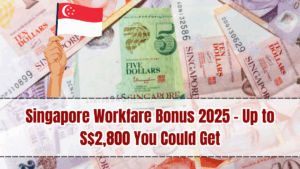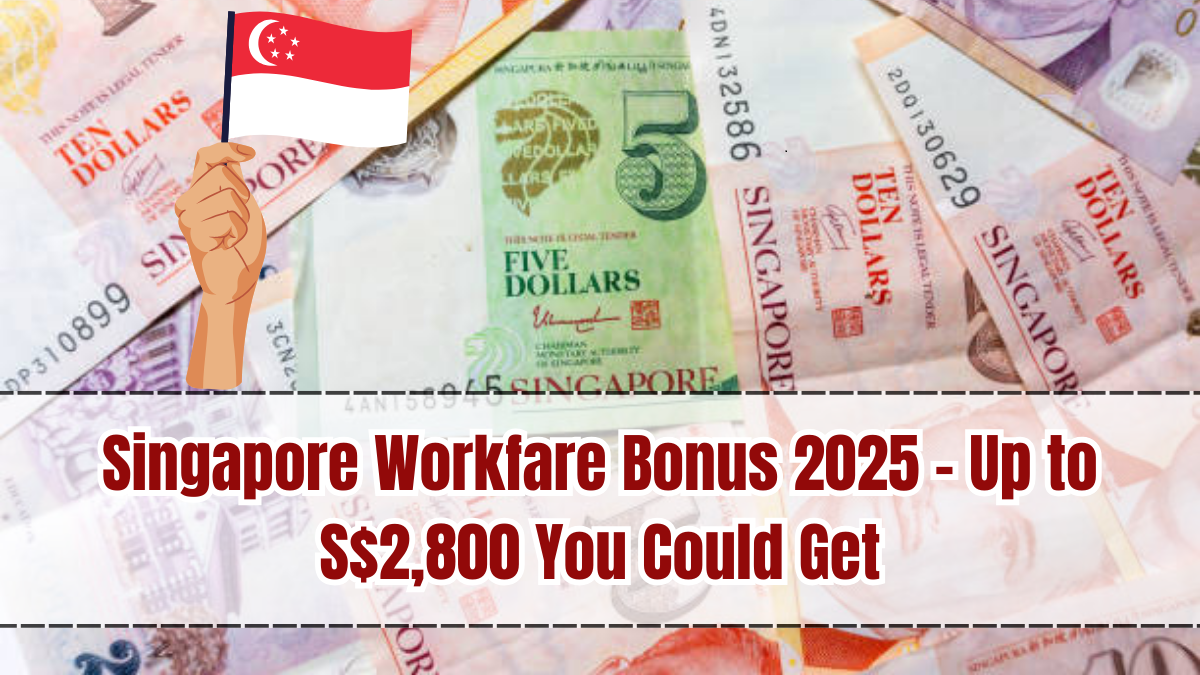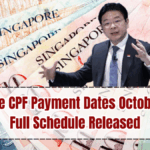With the rising cost of food, transport, and healthcare, many lower-income workers in Singapore are feeling the squeeze. To cushion the impact, the government has stepped up support through the Workfare Income Supplement (WIS) scheme, widely known as the Workfare Bonus. In 2025, the scheme has been enhanced significantly, giving eligible workers the chance to receive up to S$2,800 annually, a mix of cash payouts and MediSave top-ups. This initiative goes beyond simple relief. It reflects Singapore’s commitment to making sure that hardworking but lower-wage Singaporeans—whether employees in essential services or self-employed persons like delivery riders and taxi drivers—are not left behind as the economy grows.
The Workfare Bonus is one of the cornerstone measures that not only supplements income but also encourages continued employment and helps workers save for their long-term future. For many, this bonus means having extra cash for everyday needs while also securing healthcare coverage through MediSave. In other words, it is designed to help with both short-term challenges and long-term financial security, ensuring Singapore remains a society where every contribution is valued.

What Is the Workfare Bonus?
The Workfare Income Supplement (WIS) was created to give lower-wage Singaporeans an added boost. Unlike other schemes that focus only on direct financial support, the Workfare Bonus does two things at once: it increases your take-home income while building up your MediSave balance for healthcare and retirement needs. In 2025, this scheme has been made more generous to keep pace with rising living costs and to ensure those in the lower-income bracket get meaningful support. The maximum annual payout has now been set at S$2,800, making it one of the most impactful wage support schemes in Singapore.
Eligibility Criteria
To qualify for the Workfare Bonus in 2025, you must be a Singapore Citizen. Employees need to be at least 30 years old, while self-employed persons (SEPs) such as private-hire drivers, freelancers, and delivery riders must be at least 35 years old. Your gross monthly income should not exceed S$2,500, and you must be working either as a full-time, part-time, or contract worker, or as a self-employed person contributing to MediSave. Regular CPF contributions are also a requirement, as they reflect active work participation. The scheme excludes those who own multiple properties or fall outside the intended income bracket, keeping the support targeted at those who truly need it.
How Much Can You Receive?
The maximum payout under Workfare in 2025 is S$2,800 a year, depending on age, income, and employment type. The payout is split between cash and MediSave. The cash portion goes straight into your bank account, while the MediSave portion builds your CPF healthcare savings. For example, a 35-year-old employee earning S$1,800 monthly may receive about S$1,800 a year in Workfare, with S$1,200 in cash and S$600 in MediSave. A 55-year-old employee earning S$2,000 may receive S$2,600 a year, with S$1,700 in cash and S$900 in MediSave. A 40-year-old delivery rider with S$1,700 income may get around S$2,200 annually, while a 60-year-old taxi driver could receive the full S$2,800, with the largest share going to cash support. These examples show how older workers and SEPs benefit more, reflecting their greater support needs.
Payment Method and Timeline
Payments are made quarterly, so workers receive the bonus in four installments across the year. Cash is disbursed through PayNow (linked to NRIC) or direct bank transfers. For those without bank accounts, payouts are available via GovCash at OCBC ATMs. MediSave top-ups are credited directly into CPF accounts. Importantly, there is no need to apply for the scheme, as eligibility is automatically assessed through IRAS and CPF records. Workers will be notified via Singpass, SMS, or letters when payouts are credited.
Why This Matters for Workers
The Workfare Bonus is more than financial aid—it is recognition. It acknowledges the essential role that lower-wage Singaporeans play in keeping the country running. For workers, it means immediate relief in the form of cash to cover bills, transport, and groceries, while also strengthening long-term financial resilience through MediSave. For self-employed persons, who often lack employer contributions to CPF, the Workfare scheme acts as an important safety net, making sure they too build savings for the future.
Key Notes to Remember
You do not need to apply for the Workfare Bonus; it is credited automatically if you qualify. The amount varies depending on your age, income, and employment status, with older workers and SEPs generally receiving more. Payments are made quarterly, and recipients can expect both cash support and MediSave top-ups. The bonus is not taxable, meaning you get to keep the full benefit.
FAQs
Who qualifies for the Singapore Workfare Bonus 2025?
All Singapore Citizens aged 30 and above for employees, and 35 and above for self-employed persons, earning S$2,500 or less monthly, qualify if they make regular CPF contributions.
How much can I get from the Workfare Bonus?
You can receive up to S$2,800 annually, with the amount depending on your age, income, and employment type.
Do self-employed persons qualify?
Yes. Self-employed Singaporeans such as drivers, riders, and freelancers qualify if they are 35 or older and make MediSave contributions.
How is the payout made?
Cash is credited quarterly to your bank account or PayNow, while MediSave top-ups go directly into CPF. GovCash is available for those without bank accounts.
Do I need to apply for this bonus?
No, there is no application required. Eligibility is automatically determined using CPF and IRAS records.
Click here to know more.




